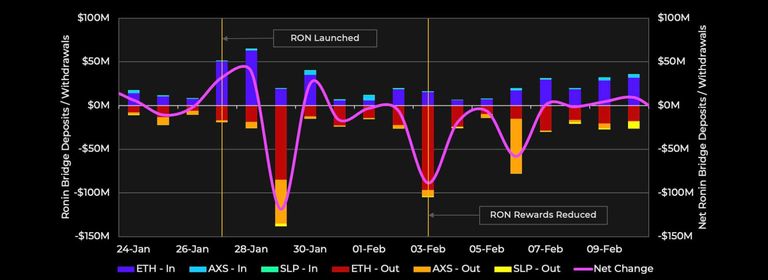
Ronin Distribution and Supply, Incentives For The Long Haul
Ronin is Sky Mavis’ solution to Axie Infinity’s scaling problem.
Ethereum’s generalized nature, clunky player onboarding, high gas fees, and slow transaction speeds each played a role in catalyzing Ronin chiefly for, but not exclusive to Axie Infinity.
RON is the ecosystem token of the Ronin blockchain. Users pay transaction fees in RON, which are then distributed to the active validators and their respective delegators in exchange for securing the network.
RON staking will incentivize holders to lock up their tokens to help secure the Ronin network in exchange for RON rewards.
Validators will be required to stake 50,000 RON once Ronin DPoS is live.
This will be fairly gated in early phases so it will likely be an available option only for select participants.
The majority will instead delegate their RON to their preferred validator to stake on their behalf in exchange for a portion of their RON staking rewards. Revenue generated by validators will comprise of Ronin gas fees, Dapp revenues, and RON staking issuance.
Delegator staking rewards can be understood with the following equation: (Staking issuance reward + gas fees + dapp fees) – commission

Daily Ronin Bridge Deposits and Withdrawals: ETH, AXS, SLP
Many VC and new crypto investors have invested in Axie in the big wave of P2E.
But still many investors and even smart VCs do not look at the quality and the level of game maturity directly.
Game is not just a business. It combines many factors that needs exciting and well organized story plot, attractive designed game characters and sustainable tokenomics, WEB3 compatibility and huge popularity that attract many non-crypto users.
Even though Sky Mavis has well designed scaling solution, if the game itself level is still not so much matured, it cannot have quantum jump to achieve next level success.